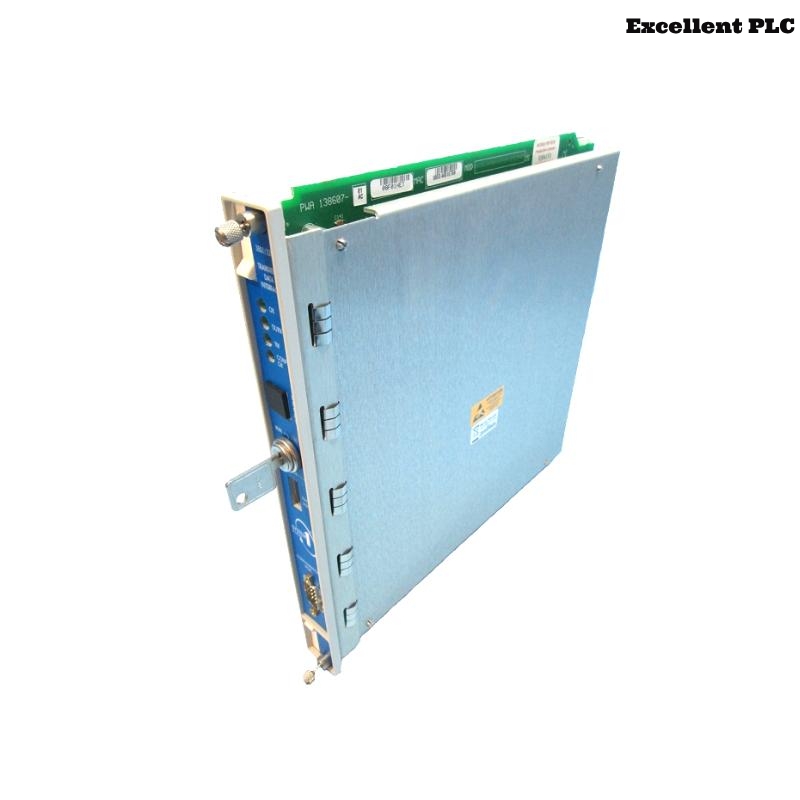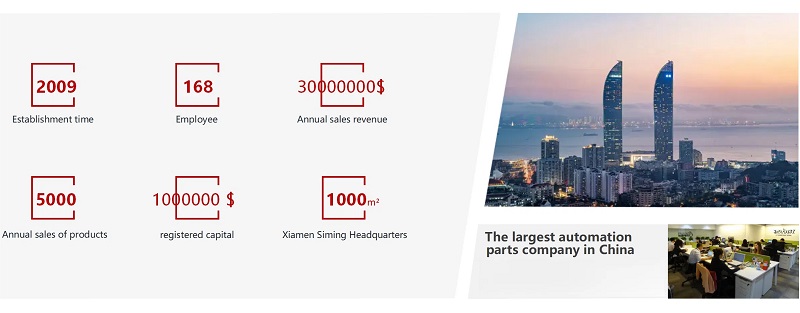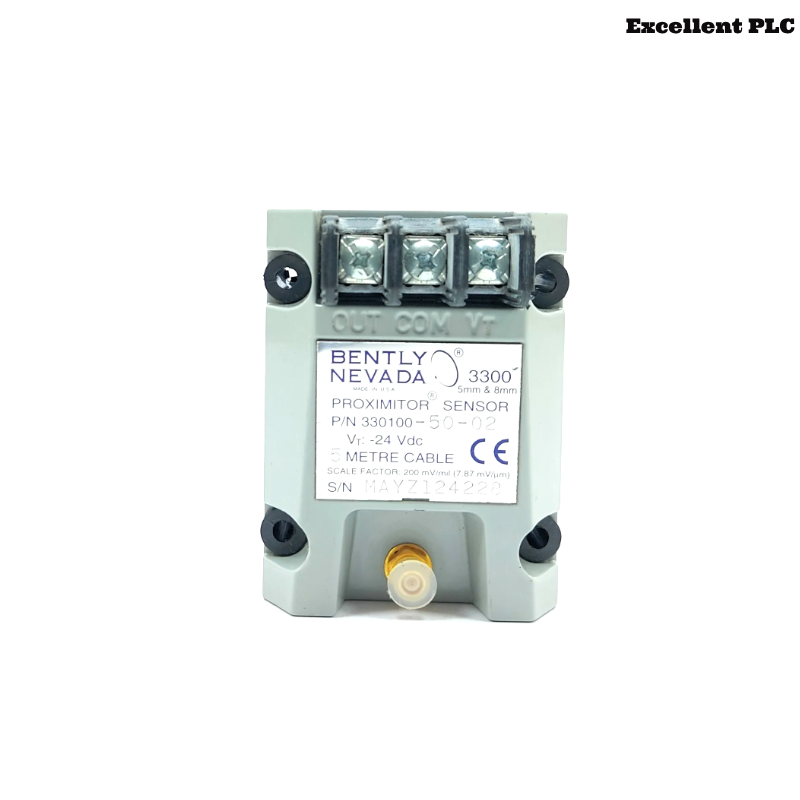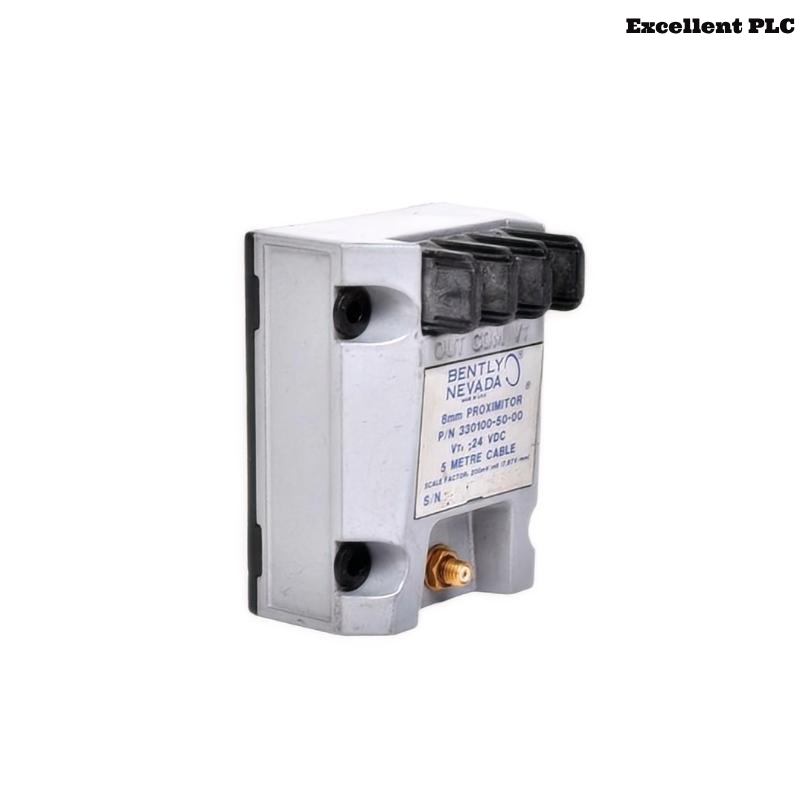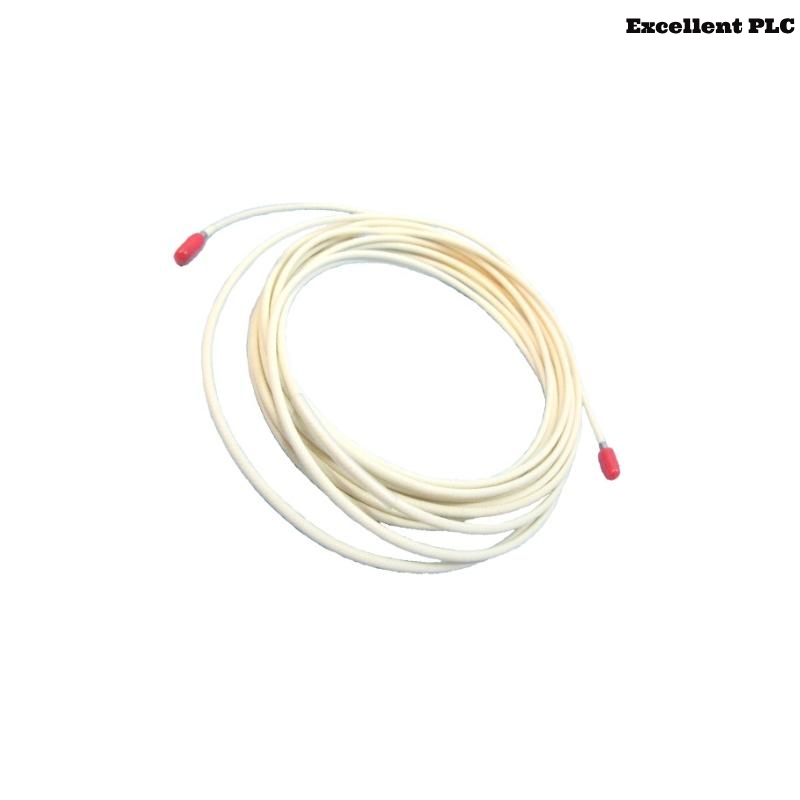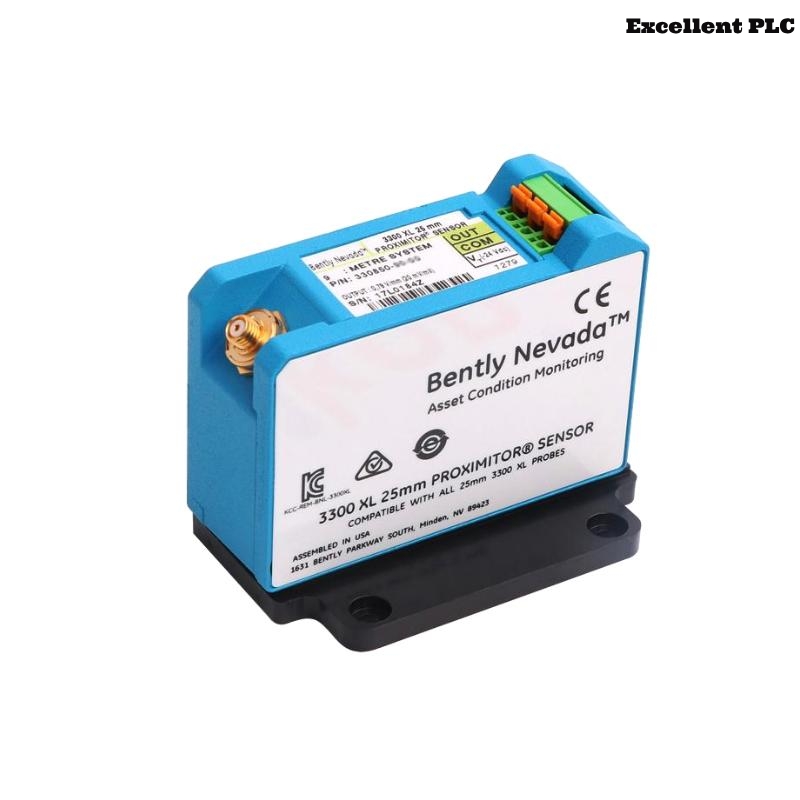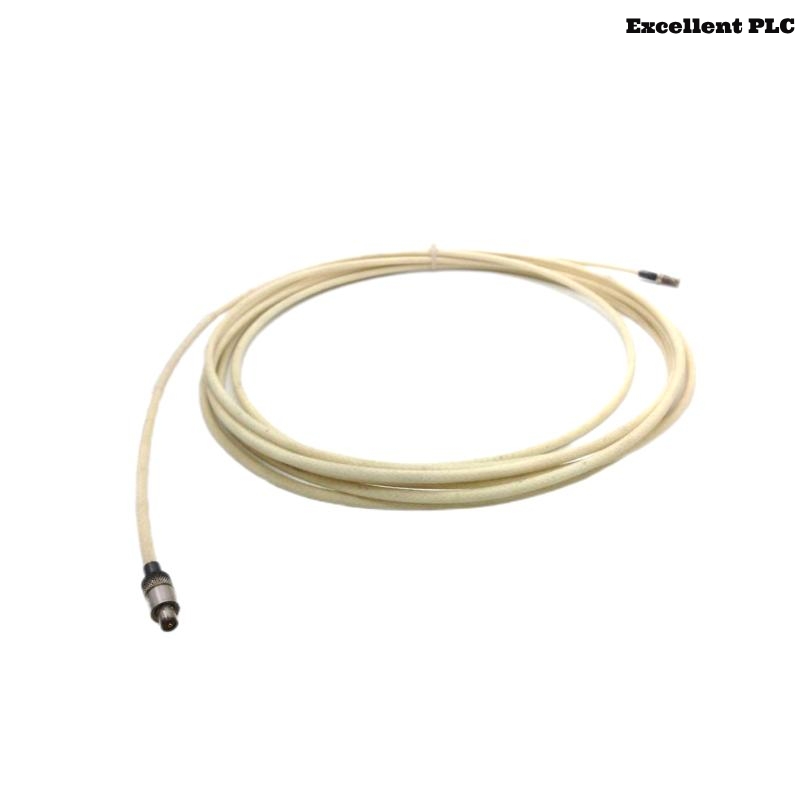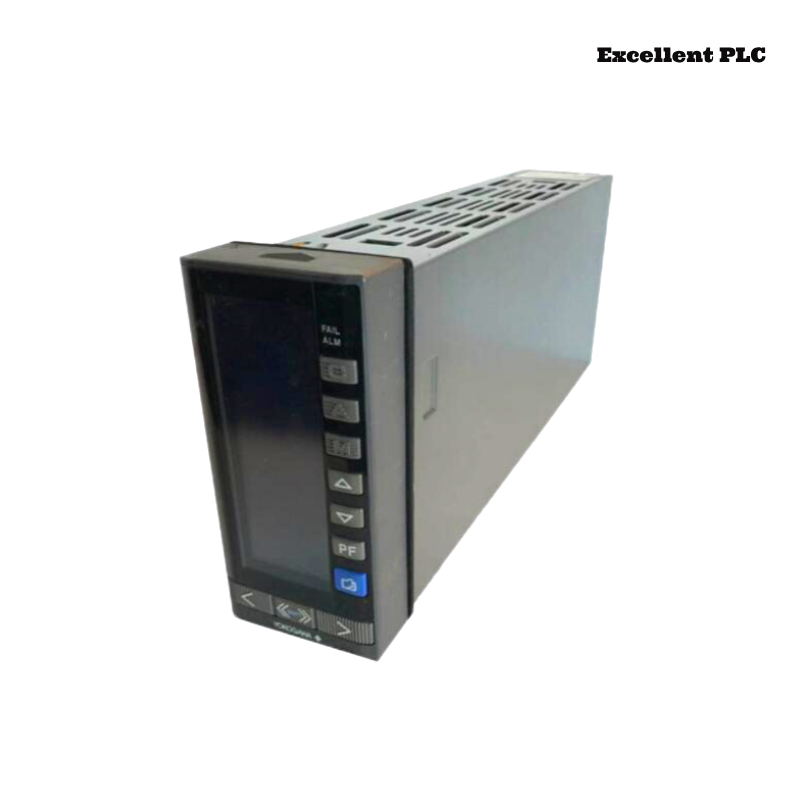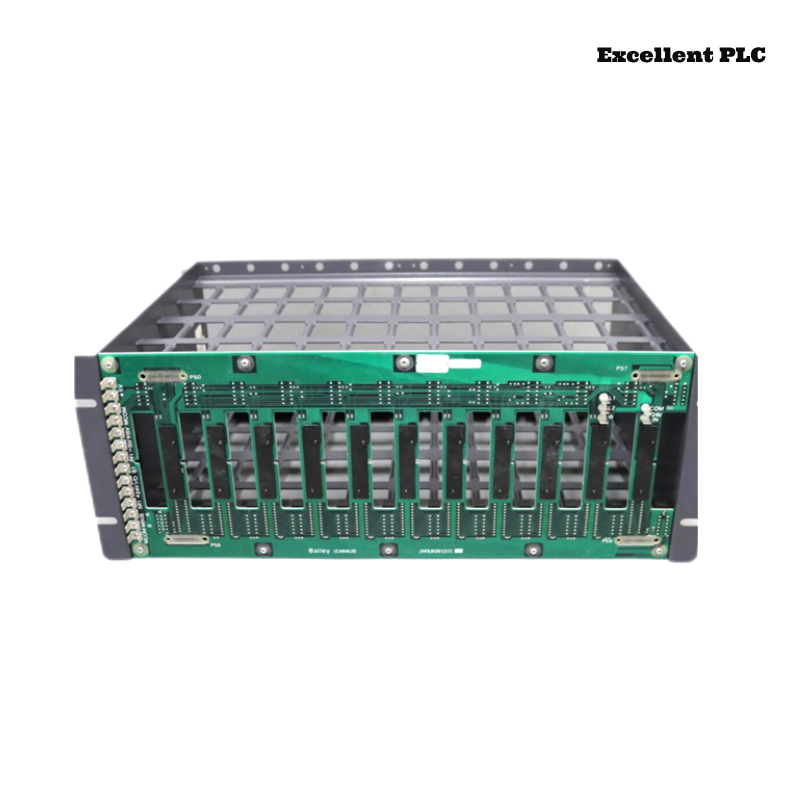| Company Information | ||||||||
| [email protected] | ||||||||
| Mobile | +8613666084105 | |||||||
| +8613666084105 | ||||||||
| 13666084105 | ||||||||
| Add | Room 1004, No. 62 Xiangxiu Li, Siming District, Xiamen City, Fujian Province, China | |||||||
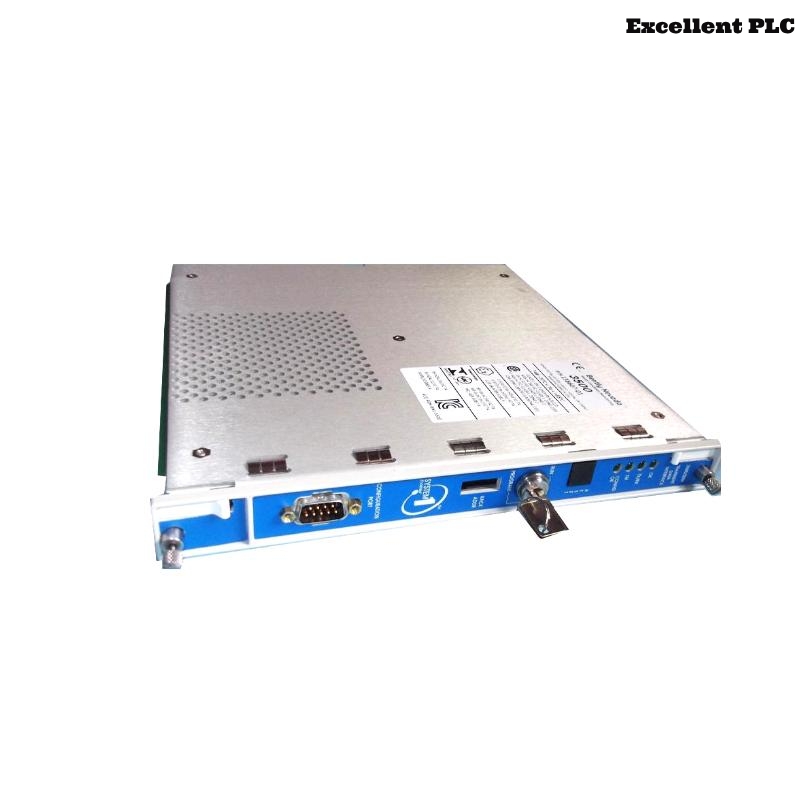
Product Introduction
The Bently Nevada 3500/22M-01-01-01 Transient Data Interface (TDI) Module serves as the primary communication interface between the 3500 monitoring system and Bently Nevada’s System 1® Condition Monitoring and Diagnostic software. Combining the functionalities of the 3500/20 Rack Interface Module (RIM) and a communication processor like TDXnet, the TDI module facilitates the collection and transmission of both steady-state and transient dynamic data. It resides in the slot adjacent to the power supplies in a 3500 rack and interfaces with M series monitors (e.g., 3500/40M, 3500/42M) to continuously collect data and transmit it via Ethernet to host software.
Product Specifications
| Parameter | Specification |
| Model Number | 3500/22M-01-01-01 |
| Part Number | 288055-01 |
| Function | Transient Data Interface Module |
| System Compatibility | Bently Nevada 3500 Series Rack |
| Communication Interfaces | Dual Ethernet ports (10Base-T/100Base-TX), RS232/485 |
| Protocols Supported | Proprietary protocol for System 1® connectivity |
| Data Types Transmitted | Static data, dynamic vibration data, transient data |
| Buffered Output Terminals | Yes, for diagnostic access via BNC connectors |
| Data Rate | Up to 100 Mbps Ethernet |
| Redundancy Support | Yes, via redundant TDI configuration |
| Configuration Interface | 3500/01 Rack Configuration Software |
| Power Consumption | 4.6 W (maximum) |
| Operating Temperature | –20°C to +65°C |
| Storage Temperature | –40°C to +85°C |
| Humidity Range | 0% to 95% non-condensing |
| Dimensions | 241.3 x 24.4 x 241.8 mm |
| Weight | 0.91 kg |
| Mounting | Plugs directly into the 3500 rack |
| Firmware Upgradable | Yes, via System 1® and rack configuration software |
Applications
-
Machinery Condition Monitoring: Suitable for gas turbines, steam turbines, compressors, pumps, fans, and motors.
-
Transient Data Acquisition: Captures and stores transient vibration events such as startups, shutdowns, trips, and other anomalies.
-
Integration with System 1®: Seamless data streaming into Bently Nevada’s predictive analytics platform.
-
Plantwide Monitoring Infrastructure: Acts as a centralized data gateway across multiple machinery systems.
-
Diagnostics & Root Cause Analysis: Ideal for engineers seeking detailed, timestamped event data.
-
Critical Asset Protection: Used across oil & gas, petrochemical, power generation, marine, and mining industries.
Advantages
-
Combined Functionality: Reduces hardware requirements by combining rack interface and communication into a single module.
-
High-Speed Data Capture: Enables advanced monitoring with real-time dynamic and transient data.
-
Redundancy Ready: Supports dual TDI installation for fault-tolerant operation.
-
Seamless Integration: Plug-and-play compatibility with Bently Nevada’s System 1® software.
-
Improved Diagnostic Capability: Enables pre- and post-fault waveform analysis, helping avoid unplanned downtime.
-
Firmware Upgrade Support: Ensures long-term support and scalability for future features.
-
Rugged and Reliable: Engineered for harsh industrial environments with high shock and vibration tolerance.
-
Modular Maintenance: Easy to replace or upgrade without rack downtime or re-cabling.
Latest News Headlines
-
“Bently Nevada Expands TDI Module Capabilities with Enhanced Transient Data Capture”
-
“GE Digital’s System 1® Optimized for 3500/22M Real-Time Diagnostics”
-
“New Reliability Upgrades Drive Global Adoption of the 3500 Series”
-
“Modular Transient Interfaces Lead the Future of Predictive Maintenance”
-
“Oil & Gas Sector Sees Downtime Reduction with 3500/22M Integration”
Frequently Asked Questions (FAQ)
1. What is the primary function of the Bently Nevada 3500/22M-01-01-01 module in a vibration monitoring system?
The 3500/22M TDI serves as the communication gateway between the 3500 machinery protection system and the System 1® condition monitoring software. It collects both static and dynamic (transient) data from compatible monitoring modules (such as 3500/40M, 42M, etc.), then transmits this information via Ethernet to external systems. It consolidates the functionality of the older 3500/20 RIM and provides a high-speed link to diagnostic software tools, making it essential for both protection and predictive maintenance strategies.
2. Can the 3500/22M module be used in redundant configurations, and how does it manage failover?
Yes, the TDI supports redundancy. Two TDI modules can be installed side by side in a rack (in designated TDI slots), where one serves as the primary and the other as a backup. If the primary TDI fails, the backup automatically takes over, ensuring continuous data transmission and monitoring. This capability is vital for critical assets where system reliability is non-negotiable.
3. What type of data can the 3500/22M transmit to System 1®, and how is it useful in diagnostics?
The TDI transmits static parameters like vibration amplitudes and alarm statuses, as well as waveform data and peak-to-peak values. It also captures transient event data—such as during machine startups, shutdowns, or trips—enabling engineers to perform root cause analysis, assess machine health trends, and make informed maintenance decisions. The time-synchronized data is particularly useful in evaluating machinery behavior during process disturbances.
4. Does the TDI module require special software for configuration or data access?
Yes, the 3500/22M is configured using the 3500/01 Rack Configuration Software, which provides a graphical interface to define channel configurations, module identities, alarms, and communication settings. For data access and advanced analytics, it integrates seamlessly with System 1® software, developed specifically by Bently Nevada for condition monitoring and diagnostics.
5. Is the 3500/22M compatible with all modules in the 3500 Series rack?
The 3500/22M is compatible with most of the “M” series monitoring modules—such as 3500/40M (Proximitor), 3500/42M (Acceleration/Velocity), 3500/44M (Tachometer), etc. It is not used with older or legacy modules outside of the M series. Compatibility must always be verified during system design to ensure proper communication and data acquisition.
6. How is data physically transmitted from the TDI to a remote diagnostic workstation or server?
Data is transmitted through two Ethernet ports located on the TDI module’s backplane connector. These ports support 10/100Base-TX connections and provide redundant paths for data transmission. Network cabling must conform to standard industrial practices to maintain integrity and security of transmitted signals, especially in environments with electrical noise or EMI.
7. What steps are required when replacing a failed 3500/22M module in a live rack system?
The TDI is hot-swappable, meaning it can be replaced while the rack is still powered. Upon removal of the old module, the new unit is simply inserted into the same slot. Configuration and firmware may need to be downloaded if not preloaded. However, for redundancy systems, ensure that switchover to the backup TDI is confirmed before removal to avoid any temporary loss of data acquisition.
8. Is the firmware of the 3500/22M field-upgradable, and why is this important?
Yes, the firmware is upgradable via the configuration software. This is particularly important because it allows for future compatibility with updated System 1® releases, new monitoring features, improved cybersecurity protocols, and bug fixes—all without having to physically replace the module. Always use validated firmware provided directly by Bently Nevada.
9. In what industrial environments has the 3500/22M been most successfully deployed?
The module is widely deployed in industries such as oil & gas, power generation (thermal, hydro, and nuclear), petrochemicals, mining, marine, and large-scale water utilities. It is especially useful in any environment where real-time condition monitoring of rotating machinery is mission-critical to operational safety and reliability.
10. What are common causes of communication errors in the 3500/22M and how can they be resolved?
Typical issues include IP conflicts, mismatched firmware versions, outdated drivers on System 1®, incorrect rack configuration, or faulty Ethernet cabling. Resolution involves systematically checking configuration settings, re-seating the module, ensuring compatibility with all connected modules, and verifying proper grounding to eliminate electrical interference.
Recommended Models – Related and Popular Bently Nevada Options
| Model Number | Description |
| 3500/20 | Rack Interface Module (legacy version) |
| 3500/25 | Keyphasor Module |
| 3500/40M | Proximitor Monitor |
| 3500/42M | Dynamic Vibration Monitor (Accel/Vel) |
| 3500/44M | TDI Tachometer Monitor |
| 3500/15 | Power Supply Module |
Popular Models from the Same Brand (Bently Nevada)
| Model Number | Description |
| 3300 XL 8mm Probes | Non-contact proximity transducer system |
| 3500/94 | Display Interface Module |
| 3701/40 | Machinery Protection System |
| ADAPT 3701/33 | Advanced Monitoring and Protection |
| Orbit 60 Series Core | Next-gen condition monitoring platform |
| 330130-040-00 | Proximity Sensor Extension Cable |
 Excellent PLC
Excellent PLC



